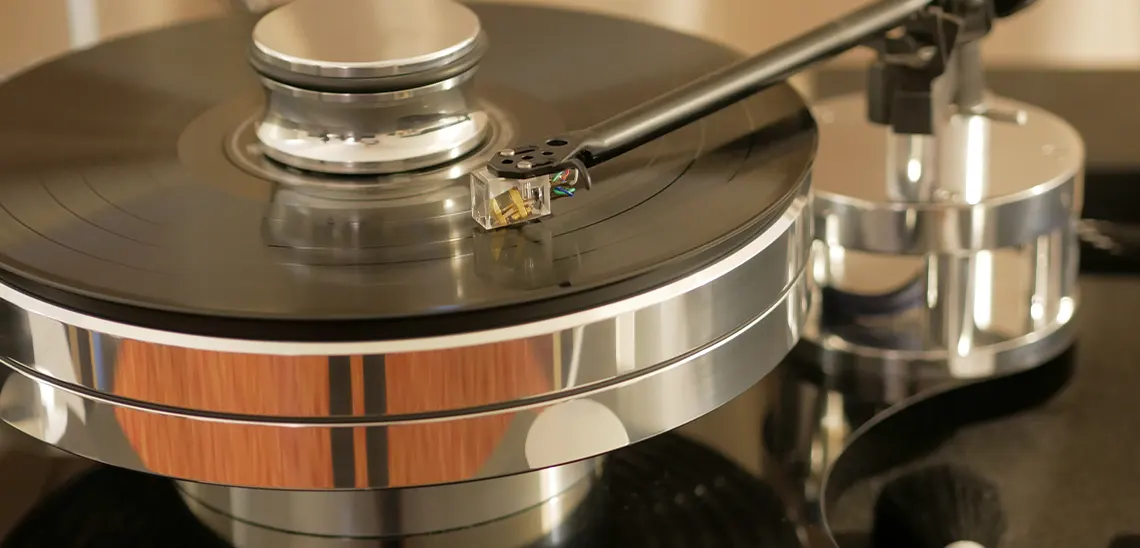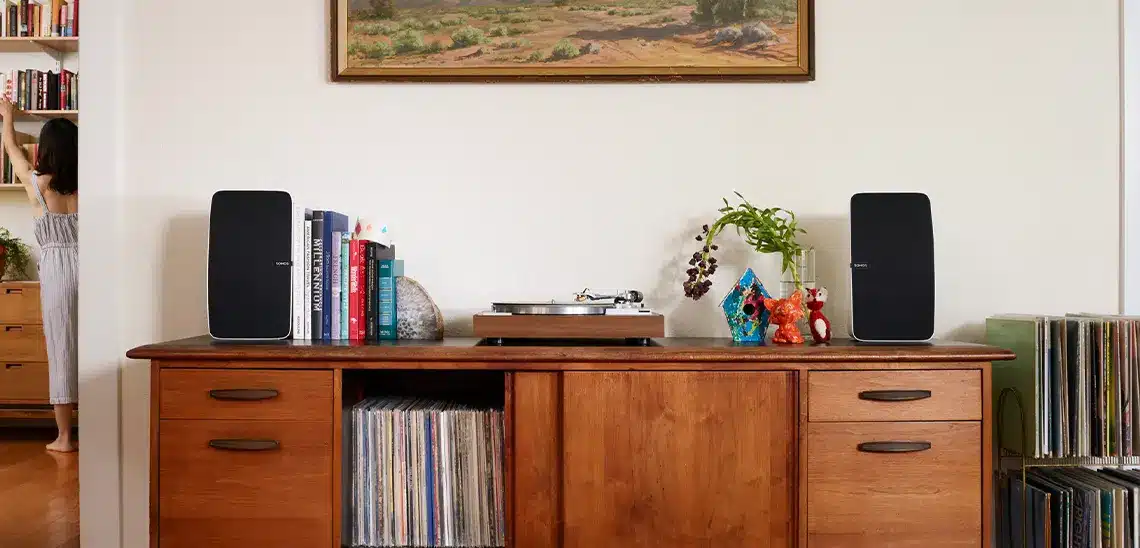The majority of turntables can play vinyl at 33⅓, 45, and 78 revolutions per minute (RPM), and your record will list its ideal speed. The vinyl disc sits in the body of the turntable, known as the plinth, which needs to lie atop a smooth surface to ensure the forearm stays within the track grooves of the record. Each turntable is equipped with one of two drives; a belt-drive system has a motor that torques an elastic belt to a spinning platter, while a direct-drive turntable has a motor that directly rotates the platter. Most DJs and performers prefer the direct-drive turntable, but the belt-drive turntable is the choice of audiophiles, record collectors, and anyone within the home listening market.
The cartridge is another essential feature of your turntable; its purpose is to convert the physical vibration of the stylus within the grooves into relayed electrical signals to your preamp. Your cartridge will possess either a moving magnet (MM) or a moving coil (MC). The most common is MM, which has a diamond stylus that pushes vibrations down a cantilever attached to a magnet. This connects with a pair of coils that produce the electrical signal that travels to your amplifier. The MC cartridge, on the other hand, has a lighter weight without a magnet, so it can detect more subtle changes in the grooves of your record. It’s important to keep the separate weights in mind before you play your first record because the MC could lead to scratching your record if you manage it with a heavy hand.
The phono stage is what sets the vinyl listening experience apart from other systems. Each record player has a weak phono signal output that reduces the bass frequencies and augments the treble. Because of the way records are manufactured to have a 22-minute runtime on each side, the wide grooves necessary for low frequencies are eliminated to maximize space. Unfortunately, this means phono signals aren’t easily audible and need to be converted into a balanced frequency “line level” signal compatible with multiple sources. The phono preamplifier then reduces the treble and increases the bass frequencies into a detectable range. The majority of record players have built-in phono preamps, so you may not need an external one. If your turntable comes with a Line output or a Phono/Line selector on the back, then you’re ready to start rocking.
Your phono preamp converted musical vibrations into a balanced “line level” signal, which now continues to the amplifier, a piece of equipment that boosts your signal for passive speakers. The stereo amp is the engine and central unifier of your sources and has several inputs for CDs, vinyl, cellphones, and more. Your amplifier heightens the dynamic range, highlights the bass, and increases the sonic quality of the audio. You can opt between two types of amps. The integrated standalone amp is a smaller model that most audiophiles find to be the more convenient choice because it combines the circuitry of the preamp and speaker-driving power into a single unit. Take a look at your integrated model to check if it already has a built-in phono preamp. The other option is the pre/power separate amp setup, which is comprised of two units. Some record collectors prefer this setup because there’s space to upgrade these units individually in the future to produce a transcendent sound. Whether you opt for an integrated standalone or a pre/power separate amp setup, select a quality one that can power your system for decades.



